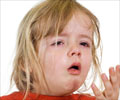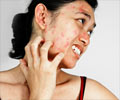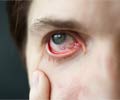Types
Allergy can occur to anything in a person’s environment. Some of the causes of allergy are listed below.
Some of the more common allergic reactions are described below:
Dust or Pollen Allergy: Symptoms of dust allergy are usually seen when the person is exposed to excessive dust. These symptoms usually appear throughout the year. On the other hand, pollen allergy occurs during seasons like spring where the pollen levels in the atmosphere are high. Symptoms are usually located in the respiratory tract and eyes and include itchy and watery eyes, sneezing, nasal itching, runny nose and throat clearing due to postnasal dripping of secretions. The nasal symptoms caused by pollen allergy are usually referred to as hay fever or allergic rhinitis.
Mold Allergy: Mold that grows in damp areas of the house like bathrooms could give rise to respiratory and skin symptoms of allergy.
Pet Allergy: Allergy could also occur to pets like cats and dogs in the house. Symptoms are usually related to the respiratory tract. People allergic to pets should avoid pets in their bedrooms. They should also regularly clean the house and wash their hands.
Medication Allergy: Nearly every medication can cause an allergic reaction, which could be mild like hives or severe like an anaphylactic reaction. Among medications, the penicillin group of antibiotics, aspirin-like medications, and ACE inhibitors are particularly implicated in causing allergies. Allergies to medications usually manifest as skin reactions. Severe anaphylactic reactions or angioedema may occur in some cases, especially when the medication is injected. Vaccines are also known to cause allergy.
Food Allergy: Food allergy may start as swelling in the tongue and throat and may be followed by stomach cramps and diarrhea. In some cases, symptoms may include breathlessness and skin reactions like hives. Foods that commonly cause allergy include cow’s milk, shellfish, peanuts, eggs, soy, tree nuts, tomatoes and wheat. Children may sometimes outgrow their allergies at an older age.
Poison Ivy or Oak: Poison ivy or oak results in skin reactions following contact with the skin. This condition is referred to as contact dermatitis. The patient suffers from itchy rashes. The skin may also develop blisters that ooze.
Latex Allergy: Some people develop allergy to latex or rubber. Health-care workers are often affected due to the use of rubber gloves. People with latex allergy usually develop skin reactions. Rarely, severe reactions may be observed.
Insect Sting Allergy: An insect sting like a bee sting can cause a mild allergic reaction at the site of the sting. This reaction includes itching, redness and a small swelling. Severe allergic reactions can develop in some individuals like difficulty in breathing, wheezing, fall in blood pressure, and swelling of the tissues around the throat.
Environmental Factors: Environmental factors like excessive heat and cold can cause allergies. Some medications can increase the sensitivity of the skin to the sun resulting in allergic reactions.



















